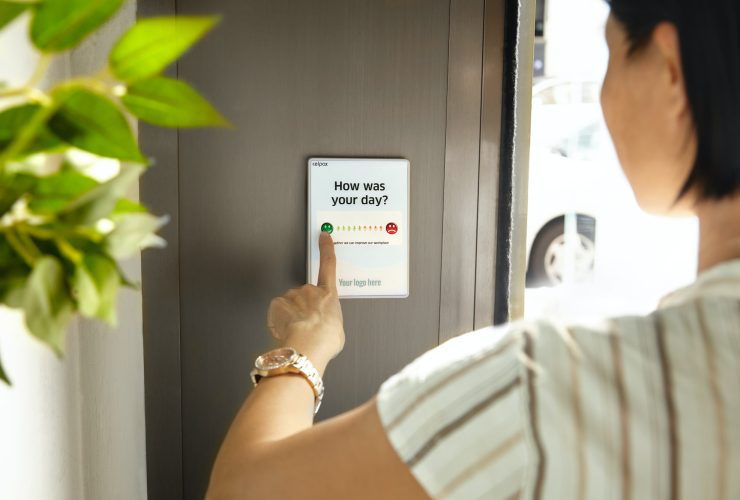The 4 Most Important 2021 Healthcare Marketing Trends
If there’s one word that could be used to describe 2020 in a nutshell, it’s “unprecedented.”
2020 was an unprecedented year for the entire world – no business or industry was immune from the effects of COVID-19 or the changes it brought to our way of life.
And healthcare was no exception. Mandatory government shutdowns affected many medical practices, whose revenue and patient pipeline dried up overnight.
And when practices did re-open, many things looked different.
New protocols. A new patient experience. A “new normal.”
Thankfully, a new year (and a vaccine) is on the horizon. But with a new year comes lots of new changes, and there are some healthcare marketing trends afoot that may change how your practice performs in 2021.
If you want your practice to stay ahead of the curve and bounce back stronger than ever before, you’ll want to stay on top of these four patient experience and healthcare marketing trends that will change the way you do healthcare marketing in 2021 and beyond.
#1: Telehealth is here to stay.
If there was one saving grace for many private practices in 2020, it was telehealth.
Some practices had already embraced telehealth before the pandemic hit, but loosened HIPAA restrictions enabled many practices to get their telehealth operations up and running overnight, allowing them to have at least some revenue coming in the door.
And even though most practices have fully re-opened now, many patients still remain wary of non-emergent trips to their doctor.
As a result, many patients have chosen to defer or delay care, especially for elective procedures.
But telehealth is one way that providers can offer patients care while remaining safe and socially-distant. What was once a tool used by a relatively few number of practices is now one that has seen mass adoption…and it isn’t going away anytime soon.
What was once a necessity is now a vital part of patient experience and satisfaction.
Zoom, FaceTime, and other video technologies are no longer niche tools used to communicate with friends and family – they are now a normal, integral part of patients’ lives. And patients love the convenience of seeing their doctor and getting medical advice from the comfort and safety of their homes.
If you want your practice to thrive in 2021, continuing to offer a telehealth option for patient convenience and safety will be key.
What this means for the healthcare marketer
- Continue to offer telehealth options to your patients, even after the pandemic and local business shutdowns are over. Many patients enjoy the convenience of being able to see their doctor from the comfort of their own homes. Obviously you can’t see every patient this way, and many cases will require an in-person visit. However, keeping telehealth – and marketing it well – will be crucial for practices and providers to continue to improve patient experience.
- If you require a consultation or screening to determine if a patient is a good candidate for a procedure (for instance, vision correction surgery), this can often be done via telehealth. Consultations are perhaps the perfect use case for telehealth appointments: providers can form connections with patients, address questions and concerns, and plan a course of treatment for the patient. Not only is this convenient for the patient, but it allows doctors to see more patients and improve efficiencies.
- Be sure to actively market your telehealth capabilities on your website, in your advertising, and on social media. Not every patient will use telehealth, but patents who seek it out shouldn’t have to search too hard to find it.
- Invest in quality telehealth software and equipment. Patients expect a quality experience from start to finish, so if you can invest in easy-to-use telehealth software that requires minimal setup and equipment that makes it easier for patients to see you and hear you in high-quality, you’ll be rewarded for it.
#2: Patient demand and ad spend will continue to fluctuate – private practices need to be nimble and adaptable
Another thing that COVID-19 has changed is patient demand. 2020 saw many erratic movements in patient demand, especially for elective procedures.
Some of this ebb and flow was due to mandatory government shutdowns, while some can be traced to patients’ safety and financial concerns.
Regardless of the source, patient demand for procedures and non-urgent medical care fluctuated greatly in 2020, and that trend is likely to continue until COVID-19 case numbers hit zero nationwide.
But there’s something larger at play: fluctuations in patient volume affect revenue. In turn. revenue affects how much money is being spent (both by your practice and your competition) in your local market – when things get tight, advertising budget if often the first thing to get cut.
And as your market sees fluctuations in ad spend, that greatly affects how much it costs to acquire a new patient from new advertising.
Because of this, it’s important to keep a pulse on COVID cases, economic activity, and ad spend from your competition in your local market.
Until things normalize, we are likely to see continued fluctuations in patient demand and ad spend, at least through the first half of 2021. If your practice advertises at all, this will a profound effect on your bottom-line revenue and ROI from your advertising campaigns.
What this means for the healthcare marketer
- As ad spend decreases in your market, it becomes cheaper to acquire a new patient. The law of supply and demand holds true: as your competition leaves the market, prices become cheaper – and so the cost to acquire a new patient decreases as well.
- However, the opposite holds true: as businesses re-open and resume advertising, those bottom-line metrics get more expensive. More competition means higher prices, and higher prices mean that it will be more expensive to acquire new patient leads from advertising.
- Keep a pulse on your local market and your competitors to see where things stand. If your practice can “stay the course” and continue to devote budget to advertising campaigns when your competition exits the market, you will be primed to acquire new patients at a much lower cost on average. Patients may need to delay care because of safety or economic concerns, but the demand is still there – and your practice should adapt accordingly.
#3: A well thought-out patient experience should be your #1 priority
2020 caused many physicians and practice managers to re-evaluate every aspect of their practice: patient flow. Revenue. Safety procedures. Office policies. Staffing.
All of these elements add up to what we think of as “patient experience” – and in 2021, patient experience will be more important than ever before.
And if there’s one thing healthcare practices have learned from this pandemic, it’s that patient experience doesn’t start when a patient walks in your door.
In 2020, patient experience often started online.
Recent studies suggest that 8 out of 10 patients turn to Google as their first step in researching healthcare or choosing a doctor – and 2020 was no different. If anything, 2020 caused that trend to accelerate as more patients turned to online resources for research and care.
Patient experience is made up of many different “touchpoints” – from how easy it is to use your website to how many rings it takes for a staff member to answer the phone.
The bottom line? Patients really care about how easy it is to find what they’re looking for online. They care about having convenient options to contact your practice, whether it’s by phone, email, or live chat on your website. Patients care about the reviews that others have left for your practice.
And every aspect of your practice – no matter how small – matters a great deal when patients consider their experience. The smallest thing can turn a patient off and cause them to go elsewhere.
And it doesn’t just matter what you say to patients – it matters how you say it. Positive, empathetic patient communication is more important now than ever before, and patients will reward you for it. After a year like 2020, who doesn’t need a little more empathy in their life?
More and more practices are taking a holistic view of their patient experience…and in turn, patients are coming to expect it. In 2021 and beyond, patients will expect that every aspect of the practice has been considered from their point of view. The practices that not only consider – but deliver – outstanding patient experiences will rise above the rest.
What this means for the healthcare marketer
- If you want your patient experience to shine, consider every facet of your brand. It’s not only about the big things – like provider availability or the cost of your services – it’s about the small things, too. How many rings does it take before you answer the phone? Is your website laid-out well? How do you communicate with patients after their care? No item is too small to consider.
- Survey your existing patients to find opportunities for improvement. What does your practice do really well? Where do you fall short?
- Survey your staff as well. Where are internal processes inefficient? What could be improved? It’s easy to develop blind spots, so soliciting ideas from your staff can help you uncover areas for improvement.
#4: Even after a roller coaster of a year, SEO remains more important than ever
Patient demand and ad spend may fluctuate quite a bit, but one thing that that holds relatively steady is Google Search results…and their importance to private practices.
As we’ve noted, more than 8 out of 10 patients turn to Google as their first step in finding a doctor, so being visible on Google and other search engines has never been more important.
Organic Search remains one of the most important healthcare marketing trends for private practices to capitalize on – and that isn’t changing in 2021.
What is changing? A number of things about Google’s algorithms – and they may have an impact on how well your practice ranks.
Google makes more than 3,000 tweaks to its algorithms each year, and even the smallest can have a tremendous impact on your patient volume.
In 2021, Google is focusing on website speed and formally integrating speed metrics into its algorithm for the first time. Websites that don’t meed Google’s “Core Web Vitals” for user experience are likely to see declines in rankings that will mean less traffic.
What this means for the healthcare marketer
- SEO should remain a top priority for private practices in 2021. Smart investments in SEO and online user experience go a long way, especially in healthcare.
- Focus on website speed if you haven’t before…and even if you think your website is fast, it pays to double-check and make the right investments in caching, content delivery networks, and other technologies that deliver an exceptional experience to your patients, no matter their device or browser.
- Google is focusing more on the signals of Expertise, Authority, and Trust (sometimes called E-A-T in the SEO community). Healthcare is considered a “sensitive category” by Google, which means the bar is set higher. Ensure that your practice meets Google’s standards for Expertise and Authoritativeness in the content you publish, as well as Trust as a business.
As patients and practices alike adapt to a “new normal” and “the new way of doing things” in 2021, certain aspects of healthcare marketing will never change. Practices that provide an amazing service, communicate effectively, and deliver an exceptional experience will always beat out those who don’t.
But things change, and healthcare marketing trends are no different.
- Telehealth is on the rise, and patients desire the convenience it offers.
- The ups and downs of the global situation require that practices be adaptable in their advertising and seize opportunities when they present themselves.
- Well-thought-out patient experiences will help practices deliver much-needed happiness to patients who are accustomed to healthcare being an otherwise bland experience.
- And although SEO is an always-changing world, getting the SEO fundamentals right will pay huge dividends that will benefit practices for years to come.
We hope that these four 2021 healthcare marketing trends will help your practice thrive in 2021 and far beyond.








